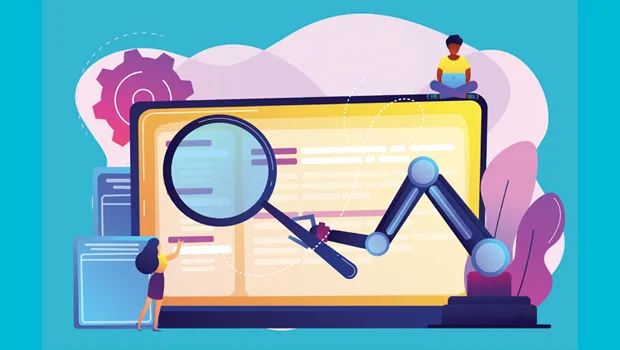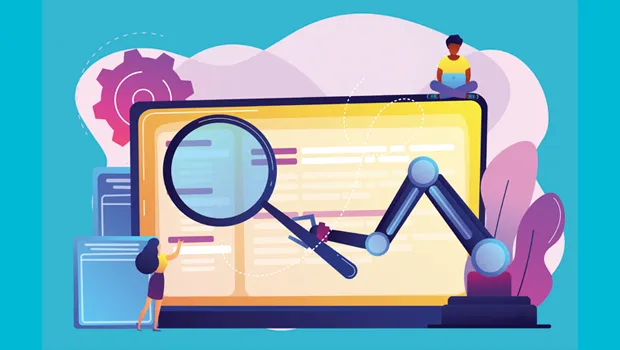Robotic Process Automation (RPA) for beginners: 8 key concepts
Blog: The Enterprise Project - Enterprise Technology
This year, the Robotic Process Automation (RPA) market is predicted to hit $2.5 billion, having grown at a compound annual growth rate of between 70 and 80 percent over two years, according to a report produced by the Everest Group. There could be some 2.5 million robotic desktop automation (RDA) bots running on desktops and between 700,000 and 800,000 RPA robots on cloud and on-premise servers, Everest’s data says.
[ What's the difference between RPA and AI? Read: Robotic Process Automation (RPA) vs. AI, explained. ]
Although RPA usage is expanding across industries, geographies, and organizational sizes, many RPA buyers are still in the earliest stages of research or adoption. For those just starting with RPA, there are a number of key concepts that are helpful to understand. Let’s delve into eight:
1. RPA is software that replicates what humans do
As we explained in our RPA in plain English primer, “RPA automates everyday processes that once required human action – often a great deal of it performed in rote, time-consuming fashion.” The software, often referred to as a bot, replicates how the human would interact with an application or system and then automates that task.
“An RPA bot typically performs the automated tasks the same way a human would – i.e., logging into systems with an ID, entering data, gathering output or results, performing rule-based tasks, and so on,” explains Siddhartha Sharad, director at consultancy Pace Harmon.
Here are five ways to define RPA in plain English:
- “In layman’s terms, RPA is the process by which a software bot uses a combination of automation, computer vision, and machine learning to automate repetitive, high-volume tasks that are rule-based and trigger-driven.” –David Landreman, CPO of Olive.
- “Robotic process automation is nothing but instructing a machine to execute mundane, repetitive manual tasks. If there is a logical step to performing a task, a bot will be able to replicate it.” –Vishnu KC, senior software analyst lead at ClaySys Technologies.
- “RPA is software that automates rules-based actions performed on a computer.” –Chris Huff, chief strategy officer at Kofax.
- “RPA is an advanced form of business process automation that is able to record tasks performed by a human on their computer, then perform those same tasks without human intervention. Essentially, it is a virtual robot copycat.” –Marcel Shaw, federal systems engineer at Ivanti.
- “Put simply, the role of RPA is to automate repetitive tasks that were previously handled by humans. The software is programmed to do repetitive tasks across applications and systems. The software is taught a workflow with multiple steps and applications.”–Antony Edwards, COO at Eggplant.
[ How can automation free up more staff time for innovation? Get the free eBook: Managing IT with Automation. ]
2. RPA on its own is not intelligent
“RPA is a deterministic solution, the outcome of which is known; used mostly for transactional activities and standardized processes,” according to an RPA primer from Everest Group, which also notes that RPA can process structured and some semi-structured data.
Some common RPA use cases include order processing, financial report generation, IT support such as password resets and database maintenance, and data aggregation and reconciliation.
[ Want to experiment with RPA without committing to one vendor just yet? Read also: Robotic Process Automation (RPA): 6 open source tools. ]
3. Multiple bots are required to automate tasks across a process life cycle
“For example,” Sharad explains, “one bot may automate order entry tasks, while another bot may work on initiating a purchase order to the supplier.”
4. RPA can circumvent traditional IT challenges
One of the major benefits is that it can automate labor-intensive tasks without the need to make changes to existing systems. Everest Group notes that this non-invasive, user-interface-based approach is particularly attractive for processes involving multiple legacy applications. RPA can also prove useful for security tasks.
Let’s look at four more key RPA concepts. First, do you need development skills to use it?
5. Development skills may not be required
“Top RPA providers offer simple-to-deploy solutions that anyone with a few hours of training, and limited or no development experience can use to automate basic, day-to-day tasks such as generating Excel reports, filing documents into specific folders, or sending automated emails,” Sharad says. “Even with such basic automation, users can significantly change their work profile [by automating] tedious, time-consuming tasks and increasing focus on value-added work.”
[ Want resources for RPA training? Check out 8 Robotic Process Automation (RPA) training and certification courses. ]
6. RPA can be more than a money saver
There’s no question that RPA-enabled automation can eliminate process waste and human effort. But proponents say the benefits extend to increased process quality, reduced losses, and better customer experiences.
It can help reduce billing errors in manual healthcare claims processing, for example, or boost revenues thanks to smoother customer interactions. “It is important that these factors are considered and quantified in terms of cost savings, additional revenue, or reduced losses while determining the ROI on RPA investments,” Sharad says. “These considerations can help early-stage RPA programs to receive the sponsorship and funding they need.”
7. RPA can get smart
Early adopters are exploring the integration of AI with RPA to inject cognitive capabilities into their automation initiatives. RPA can evolve from assisted automation to intelligent automation as machine learning, computer vision, text analytics, and natural language processing are added to the mix.
This can enable the processing of more unstructured data, introduce predictive and prescriptive analytics, provide bots with voice and vision interfaces, and automate tasks that involve judgment, according to Everest Group. Ultimately, AI can help to usher in an era of self-management and self-healing bots.
8. RPA is rarely IT-driven
Compared to some traditional IT projects, business and functional teams play a more proactive role in RPA programs. “It is not uncommon to see RPA centers of excellence within businesses and functions like finance and HR, supported proactively by IT – quite a departure from how ERP and database implementations worked in the past,” Sharad says.
However, although RPA began as a tactical capability to help middle management automate tasks in specific functions, it’s increasingly becoming a priority for the C-suite. “Organizations no longer consider RPA just another program,” Sharad says. “It is becoming a strategic capability integral to business operations and a lever to transform employee and customer experience.”
[ Learn the do’s and don’ts of cloud migration: Get the free eBook, Hybrid Cloud Strategy for Dummies. ]
Primary Image:

